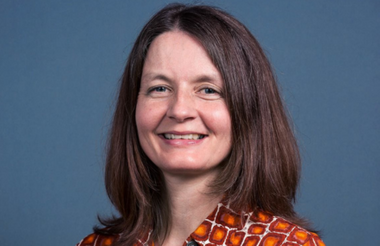Thousands of organisations are coming together to give everyone the chance to help out in their local communities to mark the king’s coronation next month.
The Big Help Out is supported by some of the UK’s biggest volunteer organisations, including the Scouts and the Royal Voluntary Service, and has been created to raise awareness of volunteering and provide opportunities for people to make a difference in their communities.
The event recognises the importance of volunteering and already there is enormous enthusiasm to get involved.
However, there are often barriers that stop people from taking up volunteering opportunities.
A decline in older volunteers
The latest Community Life Survey from the Department for Culture, Media and Sport (DCMS) reports the lowest ever numbers of UK adults engaged in volunteering with only 16% of respondents volunteering formally at least once a month.
Figures for formal volunteering by all over-50s are significantly lower than at the start of the pandemic but there has been a particularly noticeable and sustained drop to 17% in the number of people aged 50-64 years old engaged in volunteering in 2020-21.
This means that more 50-64 year olds are missing out on the improved wellbeing and sense of purpose that volunteering provides, with people who help out in their community tending to be happier and have a better quantity and quality of relationships.
And communities are also missing out on the time, experience and knowledge of older volunteers.
Barriers to taking part
The Centre for Ageing Better’s previous work with DCMS identified the barriers which prevent many people from turning their enthusiasm to participate in their community to active contributions.
The main factor at play is not a prospective volunteer’s age, but their health, income and ethnicity.
And this is particularly evident in formal volunteering opportunities.
Some of the barriers to getting involved, such as the cost of participation or physical accessibility, affect everyone but can be a particular issue as we get older.
Meanwhile, emotional barriers to participation are more exclusive to older people.
The fear of being rejected, concerns about ageism and the sense of not being welcome or valued can all play a part in stopping older people from volunteering.
The older population is growing. But it is also becoming more ethnically diverse, and a growing number of people are getting older with life-long health conditions.
With these being the groups that face the most barriers to getting involved in their communities, more action is needed to support these people to give back across their life to avoid the pool of volunteers shrinking.
Five ways to connect with older volunteers
We have identified five actions that organisations can take to get a wider range of people involved in volunteering.
- Connect and listen
Every volunteer brings different skills and experience to the table but with varying life circumstances, which can impact their involvement.
Organisations should take time to really listen to their volunteers and embrace their diverse backgrounds and strengths.
A key part of this is staying in contact with volunteers, considering how circumstances might change and how people can be empowered to do what matters to them.
- Focus on what matters to people
Not everybody engages in volunteering solely to give to their community – social connections can play a big part in people’s decisions to get involved.
It is important to recognise the different interests that people have and to celebrate everyone’s successes.
This could mean framing people’s contributions as “helping out” or “giving time” as people may not identify with the term “volunteering”.
- Play to people’s strengths
We all have different abilities, aspirations and needs so it is important to offer people the chance to volunteer in a way which suits their circumstances.
For example, organisations can design tasks or activities that people can dip in and out of, instead of having to commit to formal volunteering for a period of time.
Volunteers should be supported to be co-creators of the tasks in which they are engaged.
- Remove barriers
Organisations should focus on what emotional, physical or practical support an individual needs to get involved.
Obstacles can be minimised by making the induction process as simple as possible and checking in with volunteers throughout their time with the organisation.
Importantly, organisations should also consider how they can engage groups who are currently not involved in their work.
- Be flexible
Organisations should create a range of opportunities to get involved to suit different circumstances, interests and levels of commitment.
Some people might only be able to volunteer in short chunks of time, while others may want to make a regular, larger contribution – what matters is that people can do what they can.
Try out different ways of communicating with people – some may prefer face-to-face conversations and others may need support to get online.
An ongoing commitment
As King Charles finally gets his coronation next month at the age of 74, what more fitting way to mark the occasion then for his generational peers to be able to be fully involved with the celebrations.
The Big Help Out will provide a focal point to turn community spirit into real action, but it is vital that we consider how we can make volunteering opportunities age-friendly and inclusive.
The task is now for organisations to support people of all ages and backgrounds to contribute to their community not just for one day but hopefully as part of ongoing and regular commitment.
Related Articles











